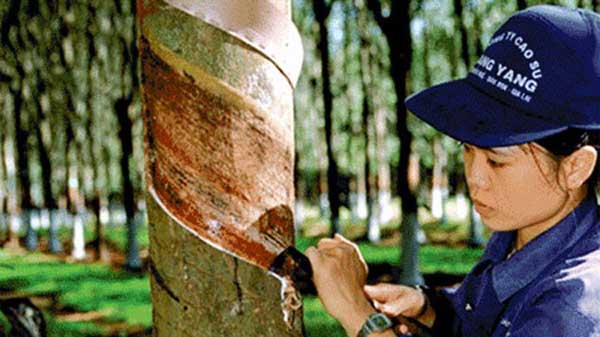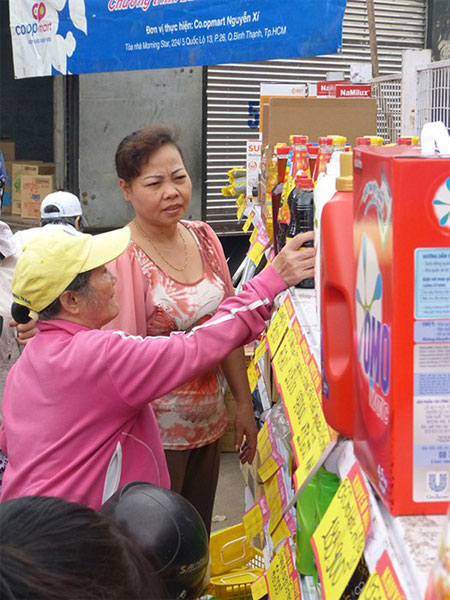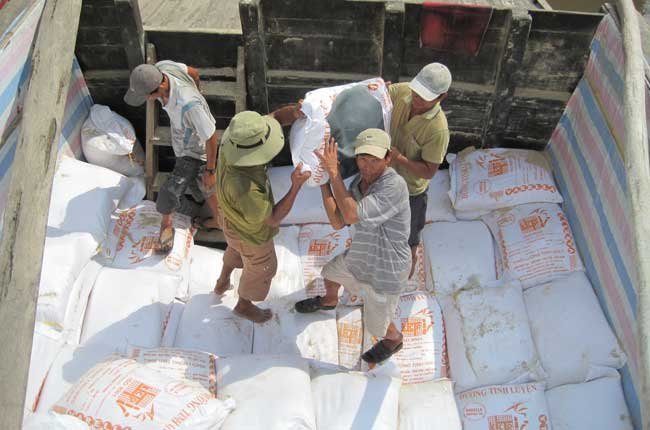Vietnamese farmers and the "bitter fruit" from Chinese traders
Vietnamese farmers and the "bitter fruit" from Chinese traders
In a number of southern provinces, Chinese traders have purchased massive amounts of odd agricultural residues such as leaves, roots and other items.
The form of sale is normally without a contract and with only one buyer, so it is very risky for the sellers.They still use the old trick of initially offering very high prices to buy, but when the farmers gather a huge amount of products or plant vast areas of the trees they need, they slash the price or disappear.
Although this trick is very old, many people are still trapped.
Let’s review similar cases that occurred in recent years.
Yellow snails are alien species harmful to agriculture, but in 1992-1995 Chinese traders bought this species at high prices so the people in the Red River Delta and the Mekong Delta rushed to raise yellow snails in ponds, lakes, marshes and wherever possible.
After a short time, yellow snails grew rapidly, attacking the fields of Vietnam. At this time, Chinese traders offered cheap prices and stopped buying snails.
After the yellow snail, Chinese traders bought buffalo hoofs in the northern mountainous region. At that time, four buffalo hoofs were priced for nearly a buffalo, causing the movement "killing buffaloes for hoofs" in many mountain areas, where buffalos grazed without guards. The number of buffaloes declined.
In 1997, Chinese traders bought cats at high prices, to “deal with the mouse pandemic in southern China”. At that time, the price for a cat was equivalent to 1/10 of a gold tael, leading to an outbreak of “cat hunting”. The number of cats seriously fell and only one year later, a mouse pandemic occurred in Vietnam. Then, people had to buy rat poison imported from China.
In addition to family pets, Chinese traders recently at a number of localities in the country bought breeding animals such as crocodiles and shrimp in large quantities and at extremely high prices.
Chinese traders recently also bought leaves, roots, and fruits of agricultural and medicinal plants in many rural and remote areas.
In late 2012, Chinese traders pushed the price of kim cuong trees to VND1 million/kg. People in some communes in Kon Plong district of Kon Tum province rushed into the jungle to dig up these trees to sell them As a result, the number of plants declined seriously and are endangered.
The same year, in Hau Giang province, China traders purchased young cassava leaves for unknown purposes, at very high prices. The farmers expanded the cassava areas to collect leaves. The prices for cassava leaves fell and Chinese traders stopped buying. Cassava trees without leaves did not yield maniocs and many cassava processing plants stopped working.
In 2013, Chinese traders went to the Central Highlands to purchase roots of pepper trees - a staple crop of the region, at VND40,000/kg. Many people dug pepper trees, digging the roots to sell. A large area of pepper was destroyed.
In 2013 - 2014, lychee growers in Bac Giang province and other northern provinces plucked young leaves of litchi trees to sell to Chinese traders without knowing why. After attention from the press and public, many scientists and authorities said litchi leaves do not have any use as medicine or food, so farmers stopped selling leaves.
In Hanoi and the northern provinces in 2013, a large number of red sua trees in the town and the northern forests were illegally chopped down to sell to Chinese traders at high prices. In many places, local authorities had to protect sua trees by strange methods, including using an “armour” on the trees as in Hanoi.






















